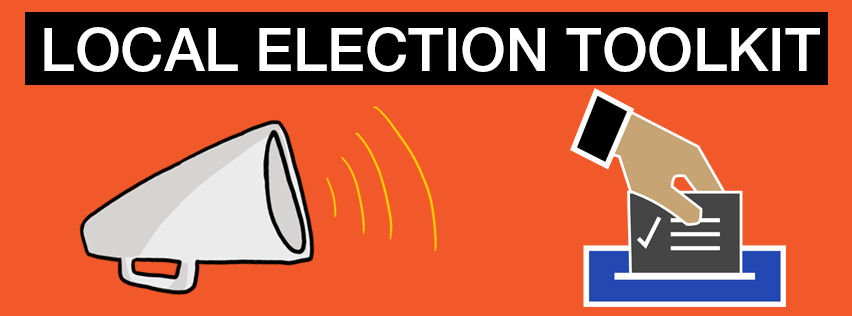Step #2: Identify an issue that matters
Writing about a specific issue gives students choice and voice. Deciding on an issue to focus on may depend on a student’s personal history, what’s happening in the news, or connections to relevant classroom curriculum. We recommend students have as much freedom as possible to select an issue they care about. Here are some resources to start a conversation and investigate the issues:
KQED’s In the Classroom: Developing and Discussing Diverse Political Views in the Classroom: Written by an educator in Texas, this blog post discusses the value of tackling political topics with students and strategies for making it work in a classroom of diverse opinions.
Digital Civics Toolkit: A wealth of resources to help students build online skills, including source checking and investigating multiple perspectives, to participate in meaningful civic dialogue and debate. Each module includes activities, conversation starters and reflection.
New York Times Learning Network: 10 Ways to Encourage Civil Classroom Conversation On Difficult Issues: Helpful tips about discussing controversial topics in classrooms. Packed with resources on how to structure discussions and links to other organizations tackling civic issues.
Facing History and Ourselves: Choosing to Participate: This curriculum explores the question How can I make a difference in the world? Readings, videos and stand-alone lessons help students wrestle with relevant civic choices. This resource is also available in Spanish.
We the Voters: Run Rep Run: This short film profiles state Rep. Juana Matias, a 29-year-old resident of Lawrence, MA, during her campaign. Matias, who speaks passionately about her decision to run for office, is now Massachusetts’s first Latina state representative.
KQED Education: Students Share Personal Stories about Election Issues: Examples from youth writers about sharing their thoughts about issues that matter to them.
KQED’s The Lowdown archive: A resource to bring the newsroom to the classroom with articles, videos, interactive graphics and lesson plans. Frequent updates and an easily searchable archive make this a resource for students as well as educators.
Generation Citizen: Beyond the Ballot lesson plans and youth civic action toolkit encourages conversation and action around issues both in and out of the classroom.
National Action Civics Toolbox: Pages of resources focused on engaging students in civic issues and opportunities
PBS’s Point Taken: This debate show can be used to examine civil debate, analyze how speakers craft an argument or simply to explore timely issues. It’s geared for a general audience, so a few topics may not be classroom-friendly.
Step #3: Create a letter
A letter can be text, video, or audio. It can feature images, infographics, charts, graphs and personal stories. These resources are designed to help you and your students create a letter that will best reach its intended audience and communicate the writer’s views most effectively.
College Ready Writing Project: Finding a Topic Mini-Unit:This unit invites students to choose a topic and think about their audience when constructing an argument. The link also includes a full unit on writing and sourcing letters.
It’s Elementary: Writing Letters to the President (and others!) in the primary grades: A bundle of resources about how to write class letters or organize around a social issue in primary classrooms.
KQED Teach: Online courses for educators to build skills in video storytelling, podcasting, infographics and other multimedia tools.
KQED Education: How to Make Your Own Political Art: Political art can accompany a text letter or stand alone as the letter. This resource helps guide students to express their views visually.
Youth Radio: How to Write a Commentary: Three activities explore the basics behind crafting commentary around a specific issue.
KQED Education: Spoken Word Letters: Spoken word is a powerful tool of self-expression. Get started with this resource and videos.
Step #4: Get your letter to right person
Our voices are loudest the closer we are to home. Reaching out to local representatives is likely to get a faster and more meaningful response. Whether students email multimedia letters or send text letters through the mail, we recommend teachers contact the elected official’s office in advance to let them know who is writing and how many letters to expect.
Contact your U.S. Representative
Contact your U.S. Senator
Contact your state governor
Contact your state representatives
Contact your mayor
Contact your county representatives
Find other local officials
